Where in the World will History Take You??
Fall Semester 2019, Cole Hamilton ‘20 spent four months studying in the Russian city of Veliky Novgorod (Великий Новгород) with three other Oles. The program gave students the chance to study the Russian language, history, and culture. Here’s a look at some of the historical places they visited.
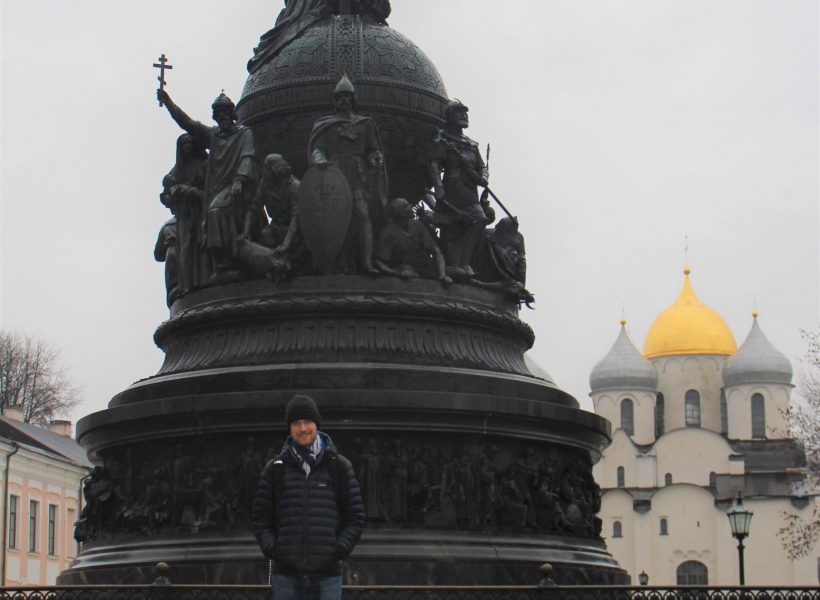
The Monument to the Millennium of the Russian Statehood (Памятник ысячелетию Российской Государственности) is in the center of the Kremlin. Erected in 1862, it celebrates 1,000 years of Russian history. The various scenes depict important events, such as the conversion of Russia to the Orthodox Church and the defeat of the Golden Hoard. (Photo by Emily Ziegler.)
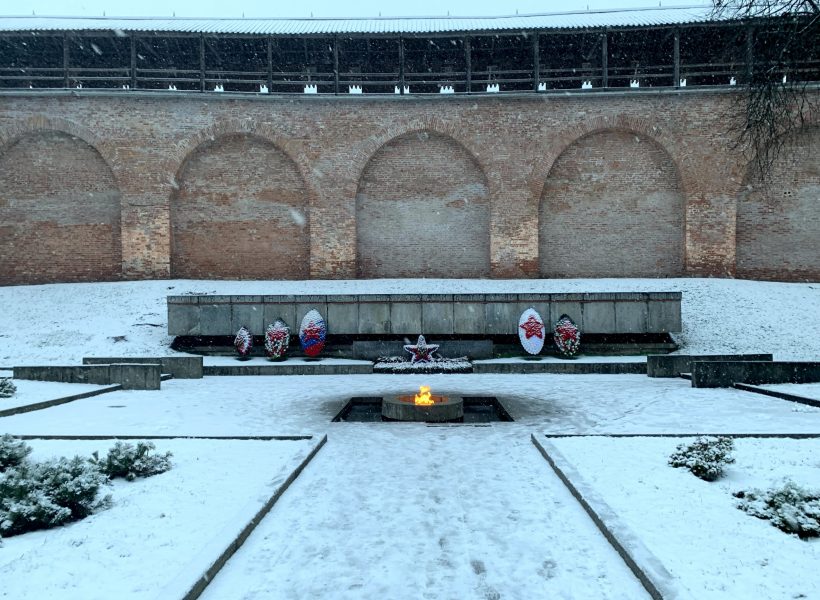
The war memorial (Мемориал Вечный огонь) inside the Novgorod Kremlin honors the men and women who died in WWII. During the war, Novgorod was occupied by the Nazis. The pre-war population of Novgorod was approximately 40,000. After the war, the population was 30. The Great Patriotic War, as WWII is known in Russia, had far reaching effects that are still felt today.
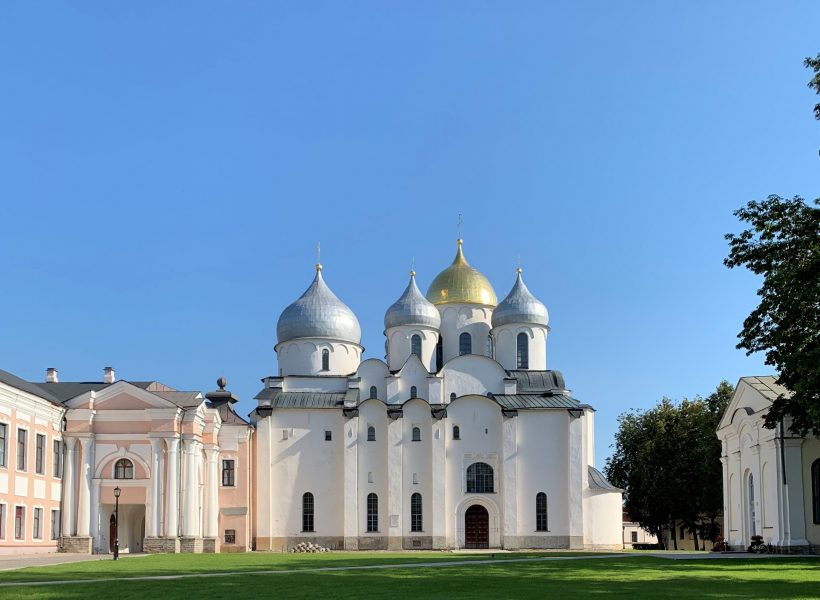
Built in 1045, the Cathedral of St. Sophia (Собор Святой Софии Премудрости Божией) is the oldest stone building in Russia. The church, also known as the Holy Wisdom of God, originally held the city treasury and a university.
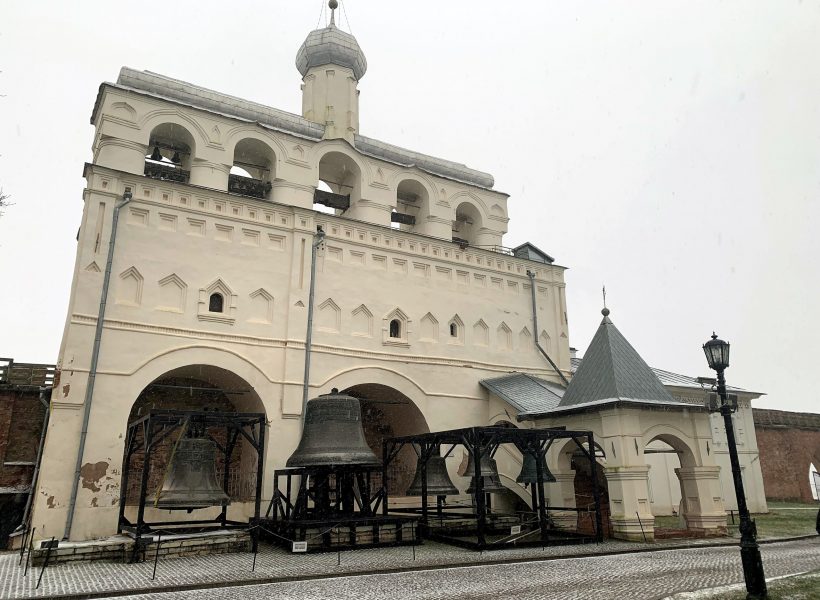
The Bell Tower of St. Sophia (Звонница Софийского Собора) was first mentioned in 1437. The tower has been rebuilt many times and remains an important religious site. In order to ensure the ancient bells continue to function, masters from Moscow and St. Petersburg come every September for the Bell Festival where visitors enjoy a musical holiday and learn the traditions of bell ringing.
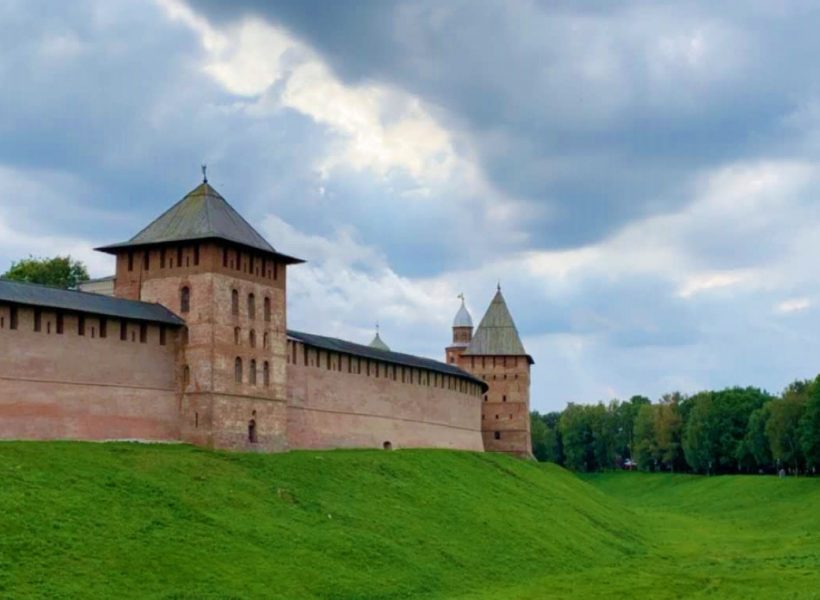
The Novgorod Kremlin (Новгородский Кремль) was the center of life in medieval Novgorod and continues to play an important role today. The Kremlin was the last line of defense against attackers and housed the most important religious and governmental buildings. Today the Kremlin houses many historical museums, a music school, and the Theater for the Novgorod Philharmonic Orchestra.
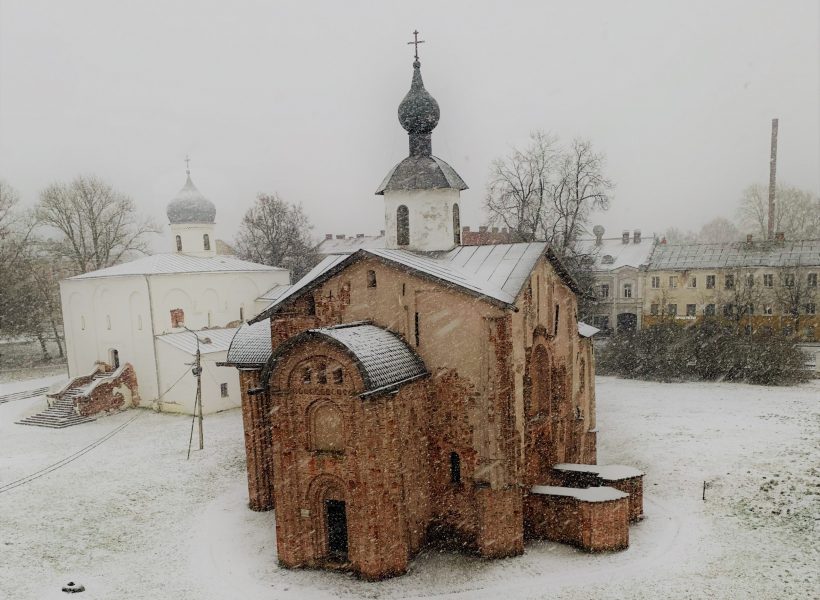
Paraskeva Church at the Marketplace (Церковь Параскевы Пятницы) was built in 1207 with money gained from foreign trade. Located at the city center and former Yaroslav’s Court, it was the largest in Medieval Europe. There is a myth that if a woman runs around the church three times, she will find a good husband